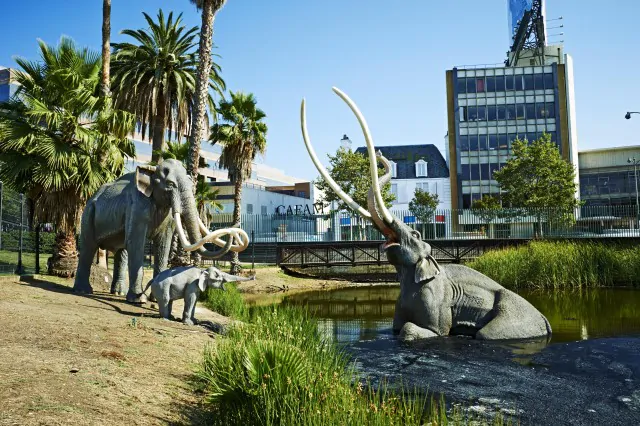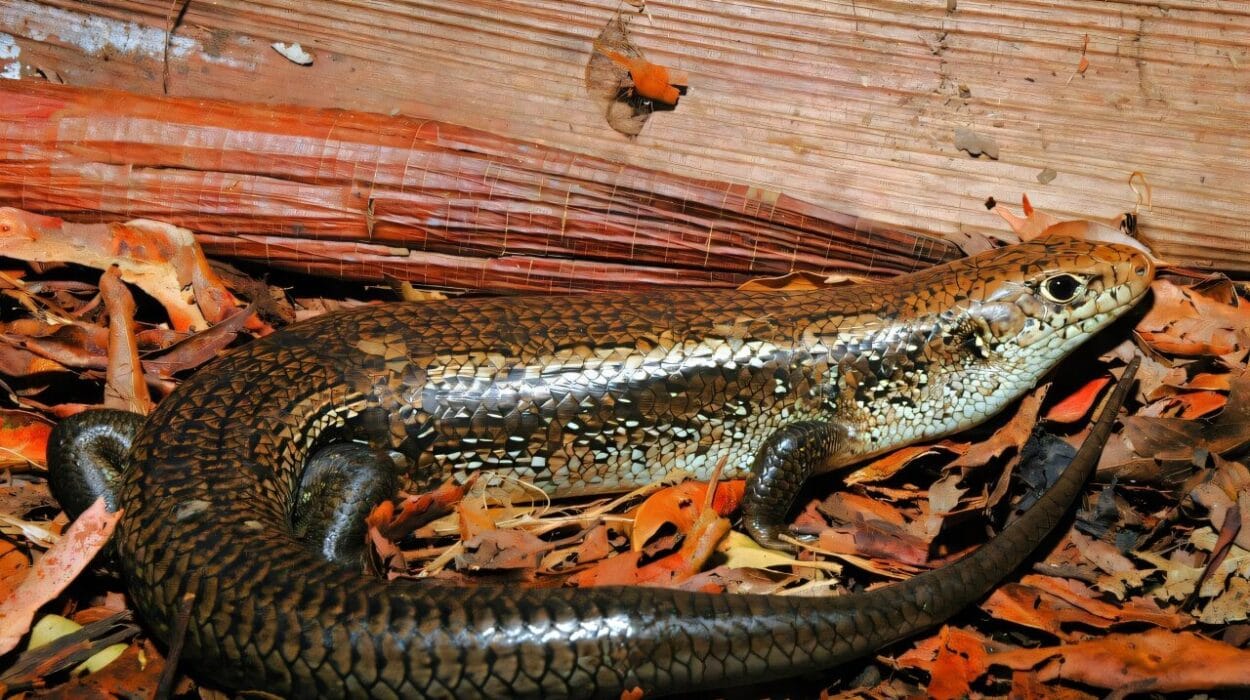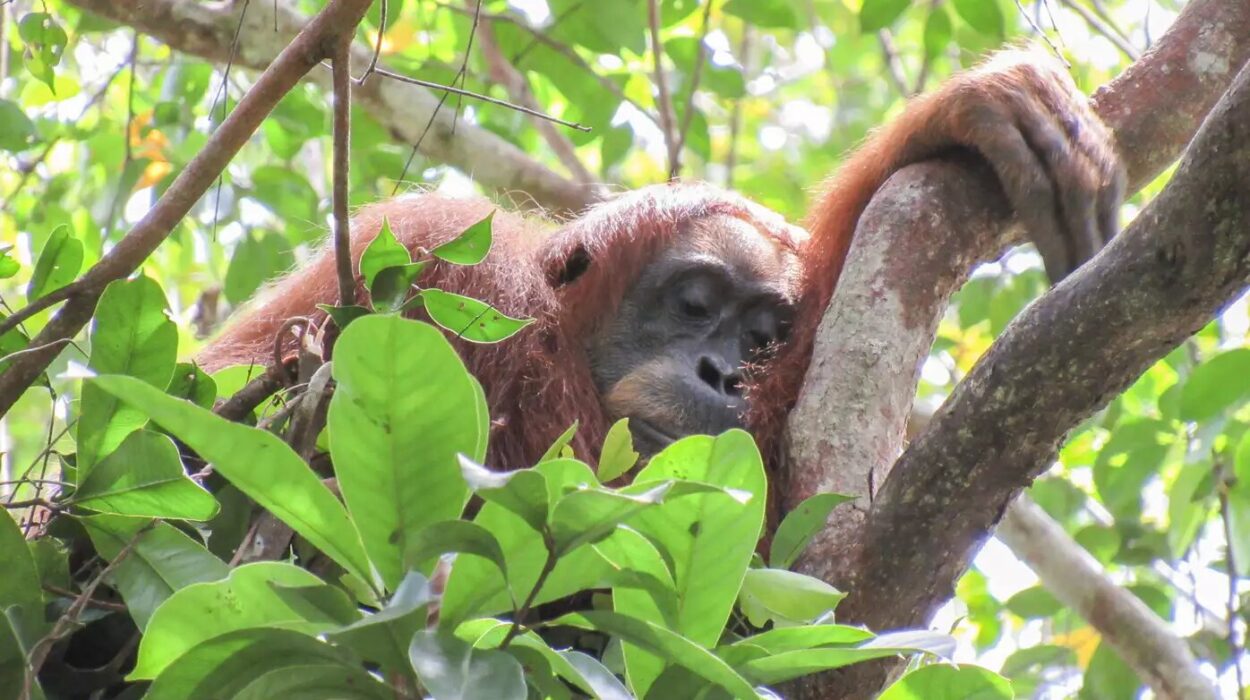Amid the bustling traffic, soaring palm trees, and modern marvels of Los Angeles, few would suspect that one of the world’s richest sources of Ice Age fossils lies beneath their feet. The La Brea Tar Pits, nestled within Hancock Park, are a place where deep time and deep mystery converge. Asphalt seeps through cracks in the earth, black and sticky, oozing from ancient reservoirs. This isn’t just geology—it’s a time machine. Every dark pool is a window into a forgotten wilderness, one that existed long before skyscrapers pierced the sky or movie stars walked red carpets.
What makes the La Brea Tar Pits so extraordinary isn’t just their sheer fossil wealth—millions of bones recovered—but the remarkable stories these fossils tell. They offer a hauntingly intimate portrait of Ice Age America, complete with mammoths, saber-toothed cats, dire wolves, and even early humans. Through a strange twist of natural chemistry and unlucky happenstance, a graveyard was preserved that rivals any in the world, where predators outnumber prey and the air was once filled with death cries echoing through time.
This is not just a story about bones and bitumen. This is a story about life and death, about survival in a dangerous world, and about the echoes of ancient lives still speaking from the tar.
The Making of a Natural Trap
To understand the significance of the La Brea Tar Pits, we must first descend into the deep past—into a geological narrative that spans millions of years. Long before Ice Age megafauna roamed what is now Southern California, tectonic forces were shaping a basin rich in organic material. Over the last 40,000 years, that organic debris—plants, algae, and animal remains—was buried and cooked under pressure, producing petroleum.
In certain places, this petroleum slowly rose to the surface through fault lines and porous rock. As it neared the surface, the lighter components evaporated, leaving behind thick, sticky asphalt—commonly but inaccurately called “tar.” These seeps are not boiling pits of bubbling goo like something from a cartoon. They are more subtle, more sinister. Some are shallow puddles; others harden and then soften again under the California sun.
This asphalt became a deadly trap. When animals stepped into the sticky ground, they quickly became mired. The more they struggled, the deeper they sank. And where prey was trapped, predators soon followed—drawn by the cries of easy meals, only to suffer the same fate. Over time, a single pit might capture hundreds of creatures, creating fossil deposits unlike any found elsewhere on Earth.
A Lost World Unearthed
The first scientific excavations at the La Brea Tar Pits began in the early 20th century, but the area had been known to Native Americans for centuries. The local Tongva people used the sticky asphalt for waterproofing canoes and baskets. When European settlers arrived, they marveled at the strange black substance and the occasional bones it contained, but it wasn’t until geologists and paleontologists began digging that the true scope of the site was revealed.
Excavations led by the Los Angeles County Museum in the early 1900s unearthed thousands of fossils. Far from being isolated skeletons, these finds were densely packed. A single pit might contain the remains of dozens of species. Today, more than 3.5 million specimens have been recovered from the site, representing over 600 species of animals and plants.
But this is no mere catalogue of extinct life. These fossils are remarkably well-preserved, protected from decay by the antiseptic properties of asphalt. They reveal minute details: tooth wear patterns, gut contents, even traces of ancient diseases. In essence, the tar pits have frozen a moment in time—allowing us to reconstruct entire ecosystems with unprecedented clarity.
The Mammoth Graveyard
Perhaps the most iconic animals of the La Brea Tar Pits are the mammoths and mastodons—those elephant-like titans of the Ice Age. Columbian mammoths, with their towering tusks and shaggy hides, once roamed the grasslands of California in herds. Though massive and strong, they were not immune to the asphalt’s grip. Fossils show that even these giants could become ensnared, their bulk weighing them down as the tar held tight.
Mastodons, slightly smaller and stockier than mammoths, were also common. Unlike mammoths, which grazed like modern elephants, mastodons were browsers—feeding on shrubs and trees. Their diet can be deduced from fossilized dung and plant material found nearby. Through these creatures, we glimpse a California that was lush and diverse, covered not by palm trees and freeways but by oak woodlands, grasslands, and freshwater marshes.
The bones of these animals are often found alongside those of predators—suggesting that their final moments were not peaceful. Trapped and bellowing, they likely attracted scavengers and hunters. Some predators would linger near the edges, waiting for opportunity. Others would pounce—and suffer the same fate. In this way, the tar pits became an accidental buffet of death.
Kings of Teeth and Claw
Among the most dramatic and numerous fossils at La Brea are those of predators. The site has yielded more carnivores than herbivores, likely due to the bait-and-trap scenario. Saber-toothed cats, dire wolves, and short-faced bears top the list.
The saber-toothed cat, Smilodon fatalis, is perhaps the most famous fossil from La Brea. With its oversized canines—some over seven inches long—and muscular build, it was a formidable predator. Unlike modern big cats, Smilodon likely hunted in open areas, using stealth to ambush prey. Its saber teeth were not used to puncture skulls but to slash throats and bellies. Fossils show numerous injuries—broken bones, healed limbs—suggesting that these cats often survived serious trauma, possibly with the help of a social group.
Dire wolves, larger and heavier than modern wolves, were also abundant. Over 4,000 individuals have been recovered, more than any other species. Their bones reveal pack behavior, powerful jaws, and a taste for large prey. Like Smilodon, they were attracted to trapped animals and often became trapped themselves. Their skeletons provide vital clues about Ice Age predator dynamics.
The short-faced bear, Arctodus simus, stood over 12 feet tall on its hind legs. Fast, strong, and probably an opportunistic scavenger, it may have been the apex predator of its time. Though rarer in the pits, its remains still tell stories of a formidable animal roaming ancient California.
Birds, Bugs, and Microfossils: The Hidden World
While giant mammals capture the public imagination, La Brea’s true scientific treasure lies in the small and overlooked. Insects, rodents, seeds, pollen, and plant remains are preserved in exquisite detail. These microfossils allow scientists to reconstruct Ice Age environments down to the season, the soil chemistry, and even the prevailing winds.
Beetles, for example, are excellent climate indicators. Different species prefer different humidity and temperature ranges. Fossil beetles from La Brea suggest that Ice Age Los Angeles was cooler and wetter than today, with periods of dramatic fluctuation. Seeds and leaves show the presence of oak, walnut, and sycamore trees, along with grasses and marsh plants.
Birds are also surprisingly common. More than 140 species have been found, including condors, eagles, vultures, and waterfowl. Some, like the massive teratorn (Teratornis merriami), are now extinct. Others are ancestors of modern species. These avian remains offer insights into migration patterns, diet, and even ancient diseases that afflicted birds.
This fine-grained data allows paleontologists to build a nuanced picture of life—not just who lived, but how they lived, how they interacted, and how they perished.
Human Shadows in the Asphalt
For decades, it was assumed that humans had little connection to the La Brea Tar Pits. While numerous Ice Age megafauna were well-documented, human remains were virtually absent. Then, in 1914, a partial human skeleton was discovered—a young woman, later dubbed the “La Brea Woman.” Dated to about 9,000 years ago, she was once thought to have perished in the tar, but recent research suggests she was intentionally buried nearby.
Though her origins remain mysterious, her presence places humans within the ecosystem of late Pleistocene California. Other indirect evidence includes tools made of bone and stone, marks on animal bones suggesting butchery, and charred plant material indicative of fire use.
While definitive evidence of large-scale human activity at the pits remains limited, the broader picture is clear: humans were present in the region, likely hunting the same animals, exploiting the same resources, and perhaps even witnessing the last mammoths fall.
A World in Collapse
One of the deepest mysteries La Brea helps illuminate is the mass extinction of Ice Age megafauna around 10,000 years ago. Mammoths, saber-toothed cats, giant sloths, and dire wolves vanished in a relatively short geological blink. Why?
Theories abound. One points to climate change: the end of the last Ice Age brought rapid warming, altering habitats and food sources. Another focuses on human overhunting, often called the “Pleistocene overkill” hypothesis. A third considers the possibility of disease, introduced by humans or other migrating species.
The La Brea fossils provide tantalizing clues. Changes in animal diets and stress markers in bones suggest environmental upheaval. But no single cause fits all the data. Most likely, extinction was the result of a confluence of factors—ecological dominoes falling one after another.
By studying the end of the Ice Age, we glimpse our own future. The parallels are chilling: rapid climate shifts, habitat loss, and species decline. La Brea isn’t just a graveyard; it’s a warning.
The Living Laboratory
Today, the La Brea Tar Pits remain an active research site. The Page Museum, situated next to the pits, displays thousands of fossils and features ongoing excavations visible to the public. Scientists from around the world come to study its unparalleled collection.
One project, called Project 23, began when a nearby parking garage was excavated in 2006. Construction uncovered 16 new fossil deposits, which were carefully boxed and moved to the museum grounds. These “fossil blocks” are being slowly unwrapped and cataloged, revealing new treasures and rewriting old assumptions.
Advanced techniques—CT scanning, isotopic analysis, DNA extraction—are transforming the way La Brea is studied. We’re no longer just looking at bones; we’re listening for echoes in their molecular memory.
A Mirror of Mortality
There’s something profoundly human about the La Brea Tar Pits. Perhaps it’s the way they capture not just life, but the struggle to live. The image of a mammoth mother trumpeting in vain as she sinks into tar, of wolves circling, of vultures waiting—it’s a scene both ancient and eerily modern. Life, death, violence, and hope, all trapped in a glistening black pool.
These fossils speak across time. They remind us that extinction is not a distant myth, but a recurring thread in the fabric of life. They challenge us to listen, to learn, and to act—not just as curious observers, but as stewards of the fragile world we now inherit.
The La Brea Tar Pits are a place where the past refuses to be buried. And perhaps, in their sticky silence, we can hear not only the cries of those who came before, but the whisper of our own place in the great unfolding story of Earth.






